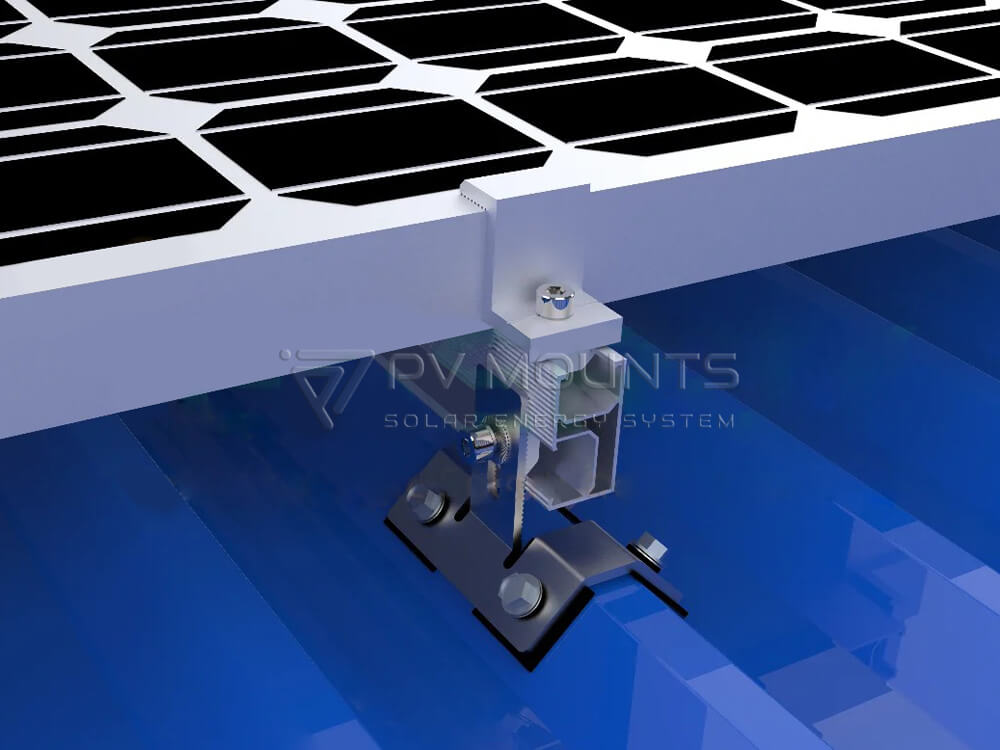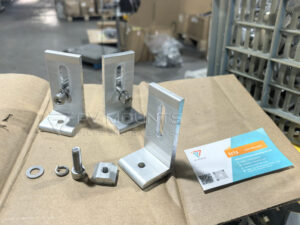Introduction to IBR Roofing and Solar Power Systems
IBR (Inverted Box Rib) roofing is an optimal choice for industrial and commercial structures, admired for its robust design and excellent weather resistance. When paired with solar power systems, these roofs transform into eco-efficient powerhouses, significantly reducing electricity costs and contributing to environmental sustainability.
What is IBR Roofing?
IBR roofing features a characterized ribbed profile, which not only provides exceptional strength but also superior durability against environmental elements. This makes it an ideal candidate for both new constructions and retrofitting existing buildings with solar systems.
Advantages of Solar Power on IBR Roofs
The integration of solar panels on IBR roofs leverages the roof’s structural benefits to provide a stable, efficient, and cost-effective energy solution. This setup not only reduces the building’s carbon footprint but also offers significant savings on energy bills.
Design of IBR Solar Mounts
The design of solar mounting structures on IBR roofs is critical to ensuring the longevity and efficiency of the solar power system. These designs are tailored to accommodate the unique profile of IBR roofs, enhancing both the aesthetic and functional appeal of the installation.
Key Features of IBR Solar Mounting Structures
IBR solar mounts are engineered to attach seamlessly to the ribbed structure, minimizing the need for penetrative procedures that could compromise roof integrity. They are typically constructed from lightweight, durable materials like aluminum or galvanized steel, which resist corrosion and wear.
Material Choices and Their Impact on Performance
The choice of materials not only influences the durability and maintenance requirements of solar mounts but also affects their thermal performance and overall efficiency. Advanced materials can enhance the solar system’s capacity to withstand various climatic conditions while optimizing energy capture.
Installation Techniques
The correct installation of solar mounting systems on IBR roofs is vital for achieving optimal performance and durability. This section details the necessary preparations and steps involved in the installation process.
Planning and Preparation
Before the actual installation, a detailed assessment of the roof structure is essential to ensure it can support the additional load of the solar panels. This includes structural integrity checks and precise measurements to align the mounting system perfectly with the roof’s profile.
Step-by-Step Installation Process
The installation process involves securely attaching mounting brackets to the ribs of the roofing, followed by the installation of rails and solar panels. Each step is carried out with precision to ensure that the entire assembly is stable and capable of withstanding environmental stresses.
Economic Benefits
Investing in solar technology for IBR roofs offers not just environmental benefits but also significant economic advantages. This section examines the costs involved and the potential savings.
Cost Analysis of IBR Solar Systems
The initial investment in solar systems includes the cost of the solar panels, mounting equipment, installation labor, and any necessary structural modifications to the roof. Despite these upfront costs, the long-term benefits significantly outweigh the initial expenditure.
ROI and Long-Term Savings
The return on investment (ROI) for solar systems on IBR roofs is compelling. Most systems pay for themselves within a few years through reduced utility bills, and they continue to provide cost savings for many years after that. This makes solar power a financially viable option for many businesses and industrial facilities.
Maintenance and Care
To maintain the efficiency and longevity of solar mounting systems on IBR roofs, regular maintenance and care are crucial. This section provides guidelines for routine upkeep and addressing common operational issues.
Routine Maintenance Guidelines
Regular inspections and maintenance ensure that the solar mounting system remains in optimal condition. This includes checking for loose components, ensuring that drainage pathways are clear, and cleaning solar panels to maintain their efficiency.
Troubleshooting Common Issues
Common issues with solar systems, such as decreased output or water leakage, can often be addressed through regular maintenance checks. In cases where more significant repairs are needed, it is crucial to consult with professionals who specialize in solar system maintenance.
Technological Advances in Solar Mounts
Advancements in technology continually enhance the efficiency and adaptability of solar mounting systems. This section explores recent innovations and their implications for future solar installations on IBR roofs.
Innovations in Solar Mounting Technology
Recent developments include adjustable and automated mounting systems that optimize the angle of solar panels throughout the year to maximize energy capture. These systems enhance the overall efficiency of solar power generation.
The Future of Solar Mounts in Roofing
The future of solar mounting systems looks promising, with ongoing research focused on developing lighter, stronger, and more adaptable mounting solutions. These advancements are expected to make solar power systems even more accessible and cost-effective for a wider range of applications.
Environmental Impact and Sustainability
The adoption of solar power systems on IBR roofs plays a significant role in promoting environmental sustainability. This section highlights the ecological benefits of these systems and the sustainability practices involved in their implementation.
Environmental Benefits of Solar IBR Systems
Solar power systems significantly reduce reliance on fossil fuels, decreasing greenhouse gas emissions and contributing to a cleaner environment. By harnessing renewable energy, these systems help mitigate the impact of climate change.
Sustainability Practices in Manufacturing and Installation
Sustainability practices in the production and installation of solar mounting systems include using recycled materials and ensuring that all processes comply with environmental standards. These practices not only enhance the environmental profile of the systems but also appeal to environmentally conscious consumers and businesses.
Regulations and Compliance
Adhering to regulations and maintaining compliance with safety standards is critical for the successful installation and operation of solar mounting systems on IBR roofs. This section covers the legal and safety aspects relevant to these installations.
Legal Requirements for Installation
It is essential to comply with local building codes and regulations when installing solar systems. This ensures that the installation is legally sound and adheres to all safety standards, protecting both the property and its occupants.
Safety Protocols and Industry Standards
Safety protocols for the installation and maintenance of solar systems on IBR roofs are stringent to protect installers and the integrity of the building. Industry standards guide these protocols, ensuring that every system meets high safety and performance criteria.
Case Studies
Examining real-world applications of IBR roof solar mounting systems provides valuable insights into their practical benefits and challenges. This section presents case studies that highlight successful implementations and the lessons learned.
Successful Implementations and Lessons Learned
Case studies from around the world demonstrate the effectiveness of solar systems on IBR roofs in various climatic and operational conditions. These studies provide practical examples of how different challenges were overcome and the benefits achieved.
Comparative Analysis of Different Systems
A comparative analysis of different solar mounting systems used on IBR roofs can help potential adopters make informed decisions based on factors such as cost, efficiency, and ease of installation.
Conclusion and Future Outlook
IBR roof solar mounting structures represent a significant step forward in the integration of renewable energy solutions with traditional building materials. As technology advances and more businesses recognize the economic and environmental benefits of solar energy, the adoption of these systems is likely to increase. This trend is supported by ongoing improvements in solar technology, making it more efficient, affordable, and adaptable to various roofing styles.
Looking ahead, the future of solar mounting systems on IBR roofs is bright. With continued innovation and a commitment to sustainability, these systems are set to play a crucial role in the global transition to renewable energy.













